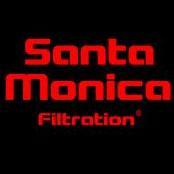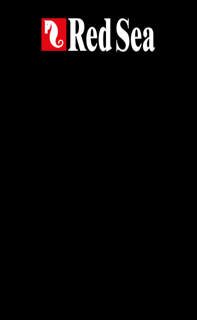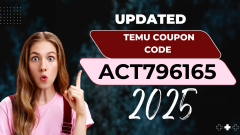Mega Powerful Nitrate and Phosphate Remover - DIY!
-
Topics
-
Latest Update
-
0
WTS: Sexy Shrimps
4 for $15. Collection at 25 Kallang Ave. Between 11:30am to 5pm. WhatsApp Nine Two 36 four nine 36. -
15
Decom Sales, tank, equipments, livestock & rockscape
Any takers for the tank set? If not will clear in 2-3wks time. -
0
{"Save"} Maximum with Temu coupon Code [act796165 ] – {$100 Off} for First Order
Temu is revolutionizing online shopping with unbeatable discounts, an extensive selection of trending products, and fast, free shipping in 67 countries. Whether you're a loyal customer or a first-time shopper, you can maximize your savings with the Temu coupon code (act796165). This exclusive offer lets you enjoy $100 off for new users, $100 off for existing users, 40% extra off, a $100 coupon bundle, and even free gifts. Don’t miss out on the Temu discount code (act796165) for April 2025, bringing you massive discounts on an array of must-have items! Why Shop on Temu? Temu has become a global shopping destination, offering: Up to 90% off on a vast range of products. Free shipping to 67 countries. Lightning-fast delivery to ensure your purchases arrive quickly. A massive collection of trending and high-quality items at unbeatable prices. Exclusive Temu coupon codes, such as (act796165), for extra savings. With these exciting offers, you can make the most of your shopping spree in April 2025 while staying within budget! Best Temu coupon Codes for April 2025 Here are the top Temu coupon codes to help you save big: Temu coupon code (act796165) $100 off – Available for both new users and existing customers. Temu coupon code (act796165) 40% off – Get an extra 40% discount on selected products. Temu $100 coupon bundle – A mix of coupons for even more savings. Temu first-time user coupon – Special discounts and free gifts for new shoppers. Temu coupon code (act796165) for April 2025 – Exclusive April savings. Temu discount code (act796165) for April 2025 – Special coupontions valid throughout the month. Country-Specific Temu Discounts Make sure to use the right coupon code for your location to maximize savings: Temu coupon code $100 off for the USA Temu coupon code $100 off for USA Temu coupon code $100 off for the USA Temu coupon code $100 off for Japan Temu coupon code 40% off for Mexico Temu coupon code 40% off for Brazil Temu coupon code 40% off for Germany Temu coupon code 40% off for France These Temu coupons for new users and Temu coupons for existing users apply to a broad selection of products across various categories. How to Apply Temu coupon Code (act796165) Sign up or log in to your Temu account. Browse and add items to your cart. Proceed to checkout and enter the Temu coupon code (act796165). Click apply and enjoy your $100 off, 40% discount, or other savings. Why Use Temu coupons? Shopping on Temu gets even better with these benefits: Flat $100 discount for new and existing users. Extra 40% off select items. Up to 50% extra discount on top deals. $100 coupon bundle to maximize savings. Free gifts for new users. So, why wait? Use the Temu coupon code (act796165) $100 off today and enjoy incredible savings on everything from fashion to electronics! Final Thoughts The Temu coupon code (act796165) is a fantastic way to maximize your savings while enjoying high-quality products at unbeatable prices. Whether you're a new or existing customer, you can take advantage of $100 off, 40% extra discounts, a $100 coupon bundle, and even free gifts. With fast, free shipping to 67 countries and up to 90% off on top deals, there's never been a better time to shop on Temu. Don't miss out—apply the Temu discount code (act796165) for April 2025 today and make the most of these incredible savings! -
0
{"Get"} Temu coupon Code [{act796165 }] {40% Off} for First-Time Users
Temu coupon Code $100 Off [act796165] + 100% Discount For Existing Users Unlock Massive Savings with Temu coupon Code $100 Off (act796165) + 100% Discount for Existing Users Are you ready to save big on your next online shopping spree? With Temu coupon code (act796165), you can enjoy massive discounts on everything from trending products to daily essentials. Whether you're a new or existing customer, Temu coupon codes (act796165) offer incredible deals that make shopping easier, faster, and more affordable. In this blog, we will walk you through the different ways you can benefit from Temu coupon code (act796165), including up to $100 off and special offers for both new and existing users. Temu, known for its unbeatable prices and a vast range of products, is offering exciting discounts for April 2025. If you haven't heard of it yet, Temu is quickly becoming one of the most popular e-commerce platforms, known for its extensive collection of products, fast delivery, and free shipping in 67 countries. With up to $100 off on select items, there’s never been a better time to take advantage of their amazing deals using the Temu coupon code (act796165). Why Temu is Your Go-To Shopping Destination Temu is more than just an online shopping platform; it’s a one-stop shop for all your needs, offering trending items at unbeatable prices. With fast delivery and free shipping across 67 countries, Temu makes sure you get the best products at your doorstep without the long wait. What's even more exciting? Temu coupons and coupon codes make your shopping experience even more enjoyable, allowing you to save up to $100 on selected items. Temu coupon Code $100 Off (act796165) for New and Existing Users With the Temu coupon code (act796165), you can enjoy massive savings. Whether you're a new customer or a regular shopper, Temu has something special in store for everyone. Temu coupon code (act796165) £100 off for New Users – As a new customer, you can enjoy a fantastic 100% off on your first purchase. This is the perfect way to explore Temu's vast collection without breaking the bank. Temu coupon code (act796165) $100 off for Existing Users – If you're a regular shopper, you won’t miss out either! Temu offers 100% off for returning users, allowing you to get your favorite items at even lower prices. Temu coupon code (act796165) 100% off – Enjoy 100% off on selected products across various categories. This discount applies to many popular items and is available for both new and existing users. Additionally, Temu coupon codes (act796165) can unlock great bundle offers, allowing you to enjoy even more savings when you purchase multiple items. Key Benefits of Using Temu coupon Code (act796165) Using the Temu coupon code (act796165) comes with numerous perks. Whether you’re shopping for fashion, home goods, electronics, or anything in between, these codes provide: $100 Off for new users: A great incentive to start shopping at Temu! $100 Off for existing users: Return customers can also enjoy major savings. 100% Extra Off: Don’t miss the 100% discount on select products with this code. Free Gift for New Users: Enjoy a surprise gift with your first order! Temu $100 coupon Bundle: Save even more with Temu’s bundle offers for new and returning customers. How to Use Temu coupon Codes (act796165) for Maximum Savings Temu makes it easy to apply coupon codes during checkout. Here’s how to use the Temu coupon code (act796165) to unlock discounts: Choose Your Products: Browse through the wide selection of products and add your favorites to the cart. Apply the coupon Code: During checkout, enter the Temu coupon code (act796165) in the coupon code section. Enjoy Your Discount: Once applied, you will see the discount reflected in your total order. Using Temu coupon code (act796165) ensures that you save big on your purchases. Whether you’re buying for yourself or getting gifts for loved ones, these discounts are a game-changer! What Are Some of the Best Temu Products to Buy with Your Discount? Temu offers a wide range of products, including: Electronics: Get the latest gadgets, headphones, and accessories at unbeatable prices. Home Goods: From furniture to décor, find stylish and affordable items for your home. Fashion: Shop for the latest trends in clothing, shoes, and accessories. Beauty: Discover top-quality skincare and makeup products. Toys and Games: Great deals for kids and families. The combination of Temu coupon codes (act796165) and Temu’s massive inventory makes it easy to find something for everyone. Temu coupons for New and Existing Users: Breakdown of Codes by Country Temu’s coupon codes are available globally, and they can be applied in various countries to unlock exclusive discounts. Below is a breakdown of Temu coupon codes (act796165) by region: Temu coupon code $100 off for USA : Save $100 on your first order when you use the Temu coupon code (act796165). Temu coupon code $100 off for USA : Canadians can enjoy a $100 discount on their first purchase with Temu coupon code (act796165). Temu coupon code $100 off for USA : Enjoy $100 off your first purchase when shopping in the USA with Temu coupon code (act796165). Temu coupon code $100 off for Japan: Japanese customers can save $100 on their first order using Temu coupon code (act796165). Temu coupon code 100% off for Mexico: 100% off select products with Temu coupon code (act796165) in Mexico. Temu coupon code 100% off for Brazil: Brazilian shoppers can enjoy 100% off select products with Temu coupon code (act796165). Temu coupon code 100% off for Germany: 100% off on selected products with Temu coupon code (act796165) in Germany. Temu coupon code 100% off for Italy: Get 100% off selected items in Italy with Temu coupon code (act796165). No matter where you are, there’s a Temu discount code that works for you. Why Temu is Worth Shopping With Temu has quickly become a favorite among shoppers worldwide, and it’s not hard to see why. Here are some of the top reasons why you should consider shopping at Temu: Vast Product Range: From tech gadgets to fashion, you’ll find everything you need and more. Unbeatable Prices: Temu offers up to $100 off on selected products, making it a go-to platform for bargain hunters. Fast Delivery: Your items will arrive quickly, so you don’t have to wait long to enjoy your new products. Free Shipping in 67 Countries: Temu offers free shipping in over 67 countries, ensuring that no matter where you are, you can enjoy their deals. Easy Returns: If you’re not satisfied with your purchase, Temu has a hassle-free return policy. Conclusion: Don’t Miss Out on Temu coupon Code (act796165) Whether you're a new user or a loyal existing customer, Temu coupon code (act796165) ensures that you can make the most of your shopping experience. With massive discounts, free shipping, and a vast selection of products, Temu coupon codes (act796165) for April 2025 make it even easier to save. Don’t miss out on these amazing offers—use Temu coupon code (act796165) to enjoy $100 off, 100% off, and much more. Happy shopping, and take advantage of all the savings that Temu has to offer! Temu is revolutionizing online shopping with unbeatable discounts, an extensive selection of trending products, and fast, free shipping in 67 countries. Whether you're a loyal customer or a first-time shopper, you can maximize your savings with the Temu coupon code (act796165). This exclusive offer lets you enjoy $100 off for new users, $100 off for existing users, 40% extra off, a $100 coupon bundle, and even free gifts. Don’t miss out on the Temu discount code (act796165) for April 2025, bringing you massive discounts on an array of must-have items! Why Shop on Temu? Temu has become a global shopping destination, offering: Up to 90% off on a vast range of products. Free shipping to 67 countries. Lightning-fast delivery to ensure your purchases arrive quickly. A massive collection of trending and high-quality items at unbeatable prices. Exclusive Temu coupon codes, such as (act796165), for extra savings. With these exciting offers, you can make the most of your shopping spree in April 2025 while staying within budget! Best Temu coupon Codes for April 2025 Here are the top Temu coupon codes to help you save big: Temu coupon code (act796165) $100 off – Available for both new users and existing customers. Temu coupon code (act796165) 40% off – Get an extra 40% discount on selected products. Temu $100 coupon bundle – A mix of coupons for even more savings. Temu first-time user coupon – Special discounts and free gifts for new shoppers. Temu coupon code (act796165) for April 2025 – Exclusive April savings. Temu discount code (act796165) for April 2025 – Special coupontions valid throughout the month. Country-Specific Temu Discounts Make sure to use the right coupon code for your location to maximize savings: Temu coupon code $100 off for the USA Temu coupon code $100 off for USA Temu coupon code $100 off for the USA Temu coupon code $100 off for Japan Temu coupon code 40% off for Mexico Temu coupon code 40% off for Brazil Temu coupon code 40% off for Germany Temu coupon code 40% off for France These Temu coupons for new users and Temu coupons for existing users apply to a broad selection of products across various categories. How to Apply Temu coupon Code (act796165) Sign up or log in to your Temu account. Browse and add items to your cart. Proceed to checkout and enter the Temu coupon code (act796165). Click apply and enjoy your $100 off, 40% discount, or other savings. Why Use Temu coupons? Shopping on Temu gets even better with these benefits: Flat $100 discount for new and existing users. Extra 40% off select items. Up to 50% extra discount on top deals. $100 coupon bundle to maximize savings. Free gifts for new users. So, why wait? Use the Temu coupon code (act796165) $100 off today and enjoy incredible savings on everything from fashion to electronics! Final Thoughts The Temu coupon code (act796165) is a fantastic way to maximize your savings while enjoying high-quality products at unbeatable prices. Whether you're a new or existing customer, you can take advantage of $100 off, 40% extra discounts, a $100 coupon bundle, and even free gifts. With fast, free shipping to 67 countries and up to 90% off on top deals, there's never been a better time to shop on Temu. Don't miss out—apply the Temu discount code (act796165) for April 2025 today and make the most of these incredible savings! -
-








Recommended Posts
Join the conversation
You can post now and register later. If you have an account, sign in now to post with your account.